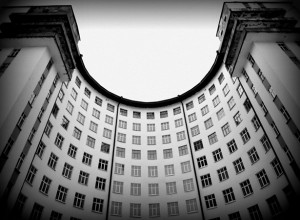3rd Ural Industrial Biennial of Contemporary Art
September 9–November 10, 2015
Opening days: September 8–14, 2015
Yekaterinburg
Russia
Curators: Li Zhenhua (Beijing—Basel) and Biljana Ciric (Shanghai)
Mobilization—just as history itself—refused to recede into the past; it becomes more and more relevant in the wide variety of forms. It may unite people based on their national, cultural, ethnical or religious identity or based on their adherence to certain values; it may be short run or may last for a long time. What role can contemporary art play in all this? Maybe it can serve as an incentive, or provide a venue, or supply the reflective understanding of mobilization processes?
In 2015, all Biennial’s programs will be concentrated at the main project venue—that is, at the Iset Hotel. Iset Hotel is a central building of the NKVD residential compound, which became popularly known as “Gorodok chekistov” (The Town of KGB officers): it is a prime example of international constructivist architecture, which became the culmination of revolutionary architecture in the 1920s–1930s Urals and embodied a number of utopian ideas about new socialist housing. The final exhibition of artistic residences, special projects, performance platform and Biennial’s research projects will be presented in this space.
The vast artistic residences program, created by the 2nd Ural Industrial Biennial, will exceed the boundaries of Sverdlovsk region, with new artistic research in very specific production spaces: Metalware Plant, Motorcycle Works, Iron Sculptures, Porcelain Factory among others.
Intellectual platform is formed around three pivotal points in the development of Yekaterinburg: industrialization, deindustrialization and reindustrialization. These episodes may be only provisionally localized in time, with the last two stages, despite their apparent contradiction, forming two aspects of the same process. Arguably, only the age of classical industrialization is irrevocably over. Each stage was accompanied by a particular socio-cultural situation, whose formation was accompanied by a mobilization appearing as a response to a crisis.
Alisa Prudnikova, Commissioner and Artistic Director of Ural Industrial Biennial:
“One of the objectives of the Biennial is to create a communicative sphere, which would help to overcome barriers in perception of contemporary art on the one hand, and industrial landscape on the other. Mobilization is a theme that first appeared as an answer to the question: how we can continue to think the Biennial’s problem field and, while using examined industrial contexts, move to actors and to concrete scenarios of mobilization processes, which intensified significantly in modern society.”
About the Curators:
Biljana Ciric is an independent curator. Her project Migration Addicts was presented in the Collateral Events program of the 52nd Venetian Biennale in 2007, and at the Biennale of Urbanism and Architecture in Shenzhen/Hong Kong in 2008. In 2013, Ciric initiated the seminar platform From a History of Exhibitions Towards a Future of Exhibition Making; she regularly publishes inBroadsheet and Yi Shu among other magazines. Ciric was on jury on number awards including Hugo Boss Asia Art Award (2013) and she is on nominating council for Vera List Prize for Art and Politics (2014/2015).She has been nominated for an ICI Independent Vision Curatorial Award (2012).
Li Zhenhua is a multimedia artist, a curator and a producer. His projects include: Art Basel Hong Kong cinema sector (2014, curator), 15 Years of Contemporary Chinese Art award (Art Power Plant in Shanghai, 2014, co-curator), Beijing Art Laboratory (Beijing ArtLab, founder). Li is a member of the selection committee of Summer Academy in Paul Klee Center and in Prix Pictet (Switzerland), and also a member of the international committee of the Digital Revolution exhibition (Barbican Center, UK, 2014).
Image: Iset Hotel. Photo: Photo: Vyacheslav Soldatov.


